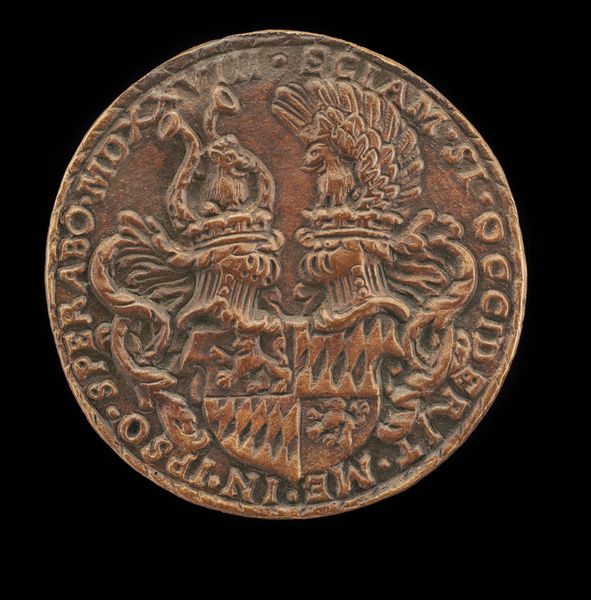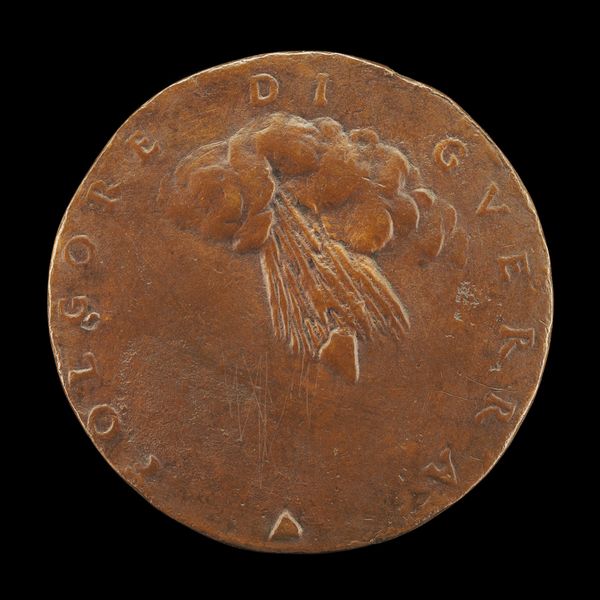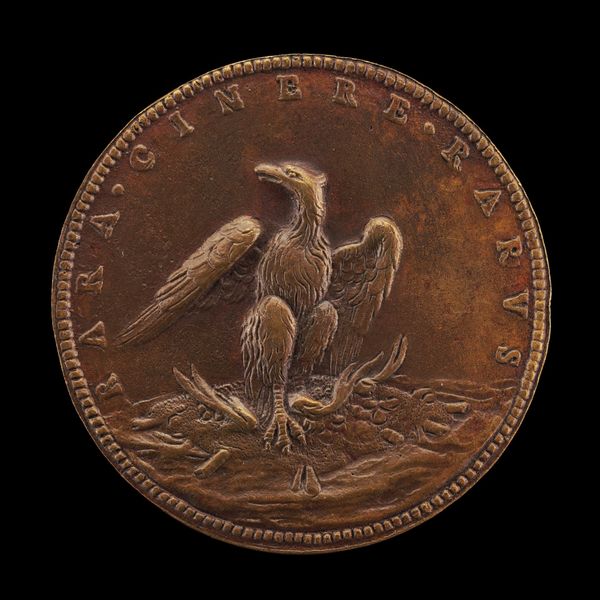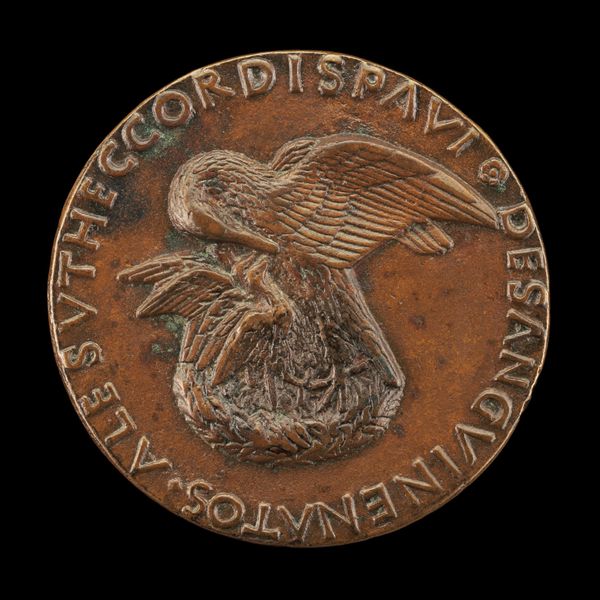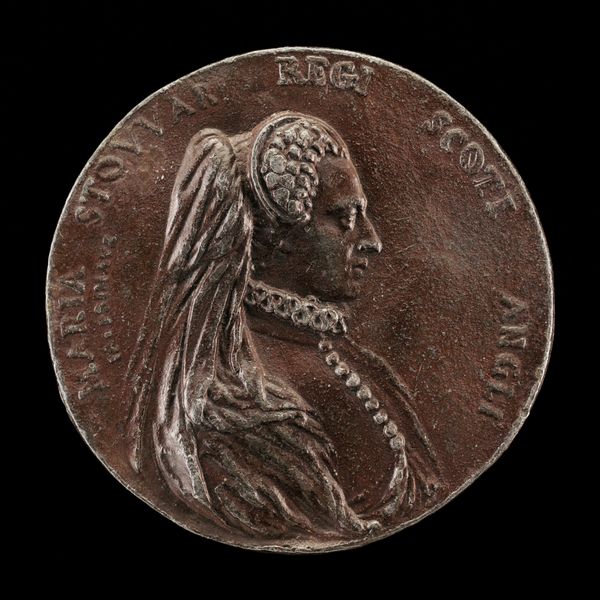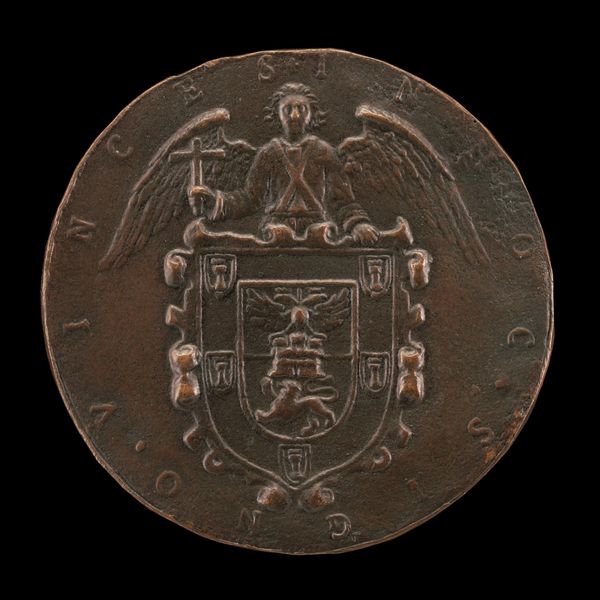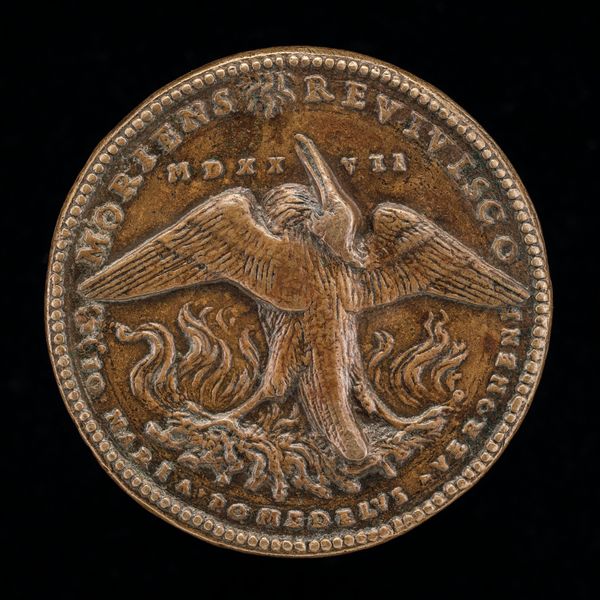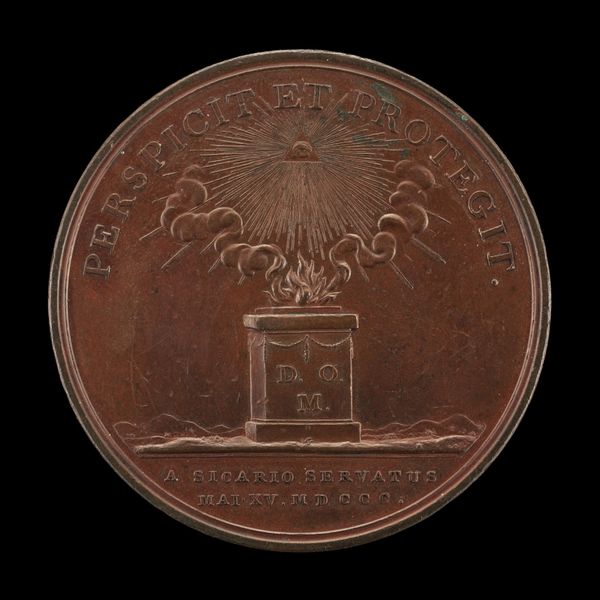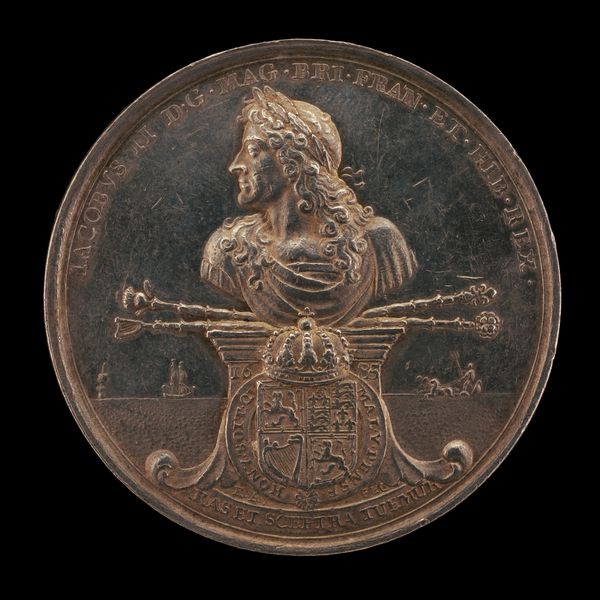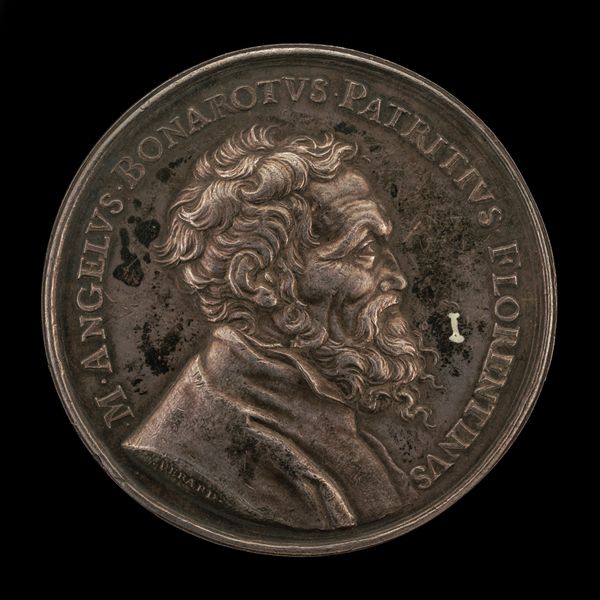![The Four Supplementary Points [reverse] by Karl Goetz](/_next/image?url=https%3A%2F%2Fd2w8kbdekdi1gv.cloudfront.net%2FeyJidWNrZXQiOiAiYXJ0ZXJhLWltYWdlcy1idWNrZXQiLCAia2V5IjogImFydHdvcmtzLzEzZWNmNmVkLWFmZmMtNDI3My1hYTdjLTVhZDhlMWY0MzZkMS8xM2VjZjZlZC1hZmZjLTQyNzMtYWE3Yy01YWQ4ZTFmNDM2ZDFfZnVsbC5qcGciLCAiZWRpdHMiOiB7InJlc2l6ZSI6IHsid2lkdGgiOiAxOTIwLCAiaGVpZ2h0IjogMTkyMCwgImZpdCI6ICJpbnNpZGUifX19&w=1920&q=75)
print, metal, relief, bronze, sculpture
# print
#
metal
#
sculpture
#
relief
#
german-expressionism
#
bronze
#
sculpture
#
symbolism
Dimensions: overall (diameter): 5.84 cm (2 5/16 in.) gross weight: 76.780 gr
Copyright: National Gallery of Art: CC0 1.0
Editor: We’re looking at "The Four Supplementary Points," a bronze relief sculpture by Karl Goetz, created in 1918. It has a weightiness to it, visually. The eagle and the scales flanking what seems to be a date – 12. FEB 1918 – gives the work a very serious mood. What strikes you about this piece? Curator: This piece is so interesting as a commentary on the social and political climate of the time. It seems Goetz is critiquing the "Fourteen Points" outlined by Woodrow Wilson as a basis for peace negotiations after World War I. The date you mentioned likely alludes to the address Wilson gave in February 1918. Editor: So the eagle, the scales… those aren’t neutral symbols here? Curator: Exactly. The eagle, typically a symbol of power, here looks burdened, almost sickly. And the scales suggest a skewed justice system. Note the phrase circling the piece: “PROGRAMM WELTFRIEDENS” - world peace program, seemingly stated sarcastically given the overall composition. How do you read those three flames near the top? Editor: Hmmm... maybe symbolic of destruction? War's aftermath? It's very different from simple peace and harmony! The domino like points give a sense of order as well but it is almost ruined by the image of the weak bird. Curator: Yes! It's Goetz using symbolic language to convey his disillusionment with the proposed peace. He seems to see it as a false promise, weighted down by hidden agendas. The socio-political discourse heavily informed artists' approaches, didn't it? Editor: Definitely makes me see beyond the initial imposing imagery and towards the artist's perspective and its implications. Thank you! Curator: My pleasure. I think this really underscores the power of art to respond to specific historical moments.
Comments
No comments
Be the first to comment and join the conversation on the ultimate creative platform.
